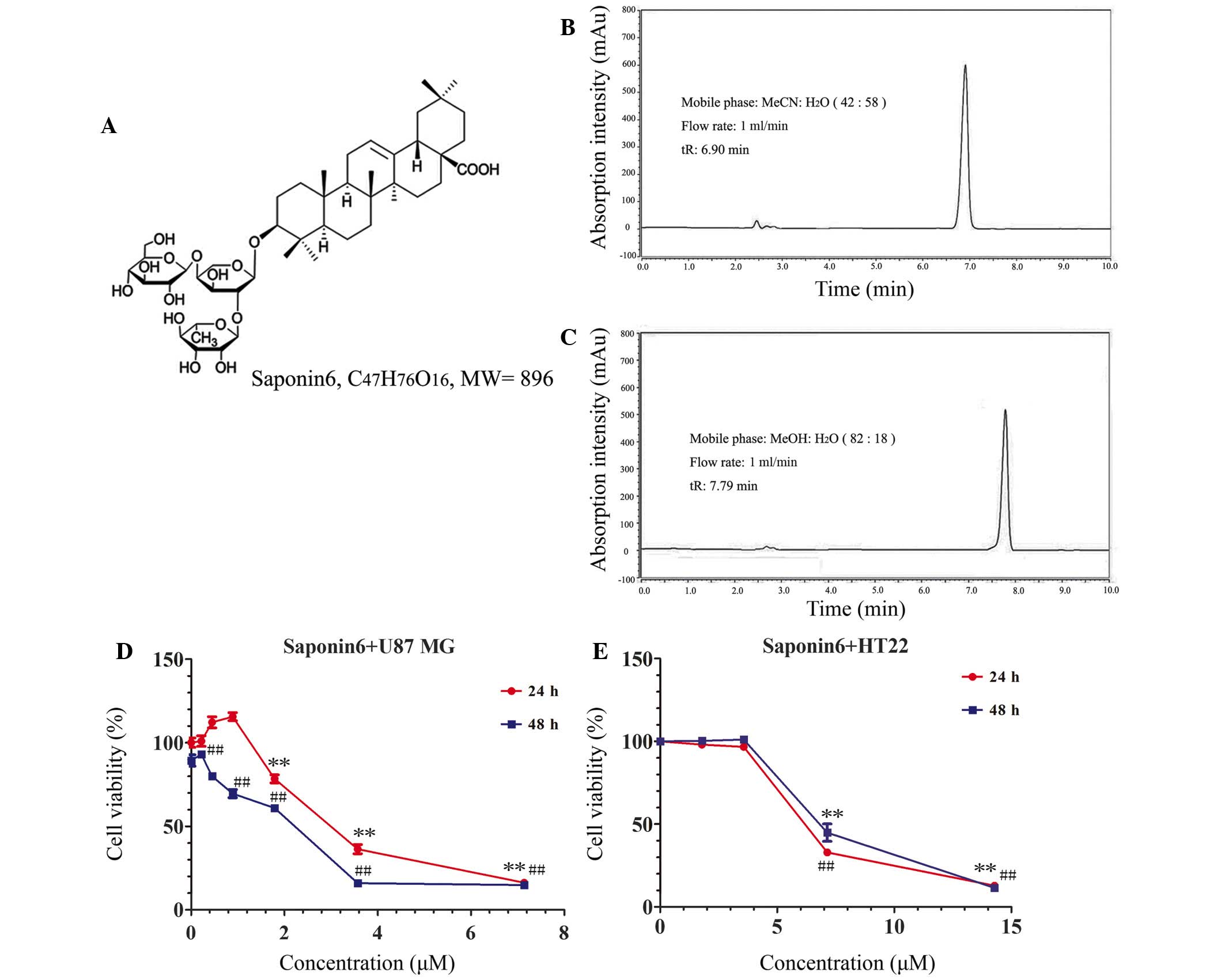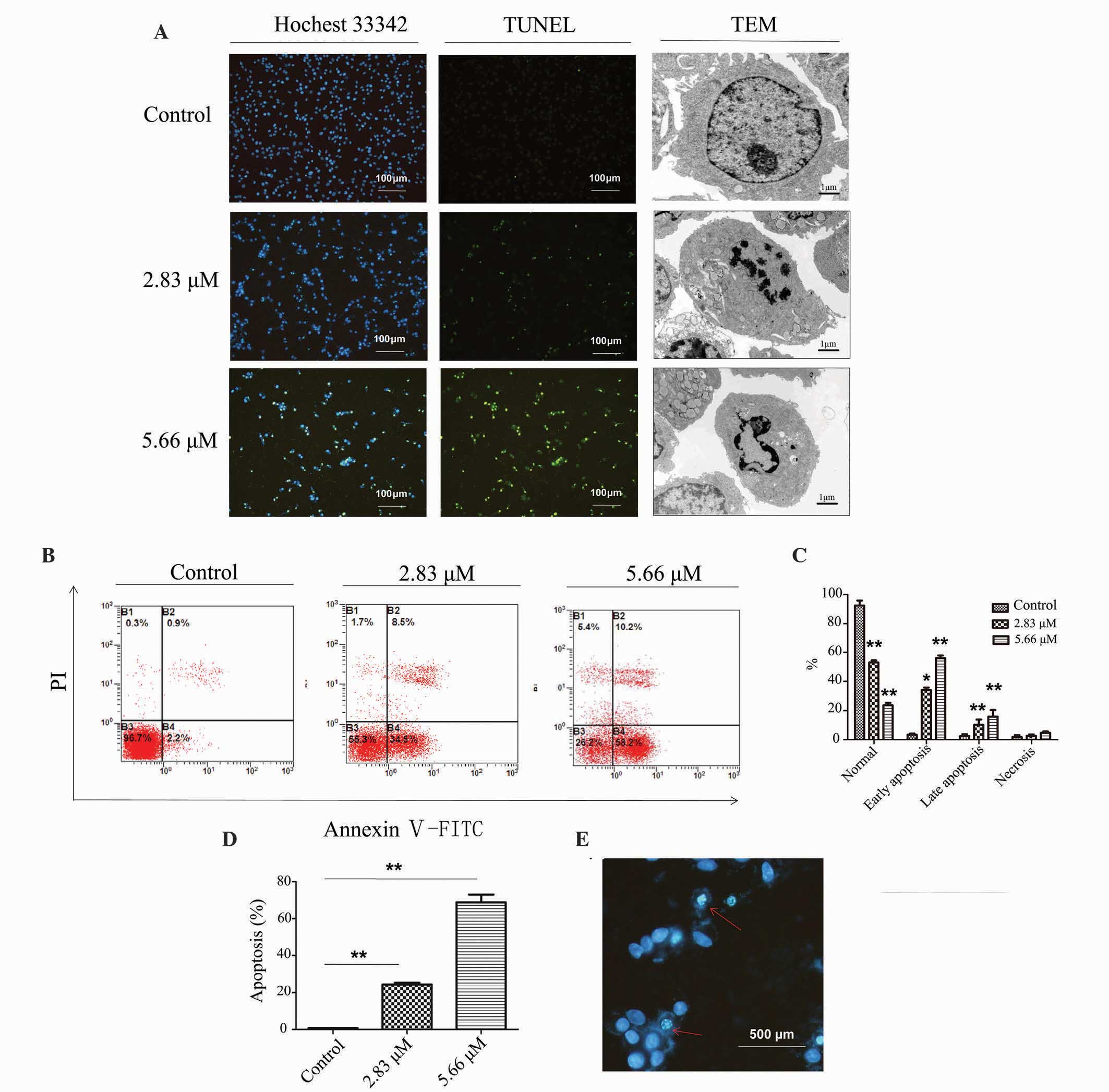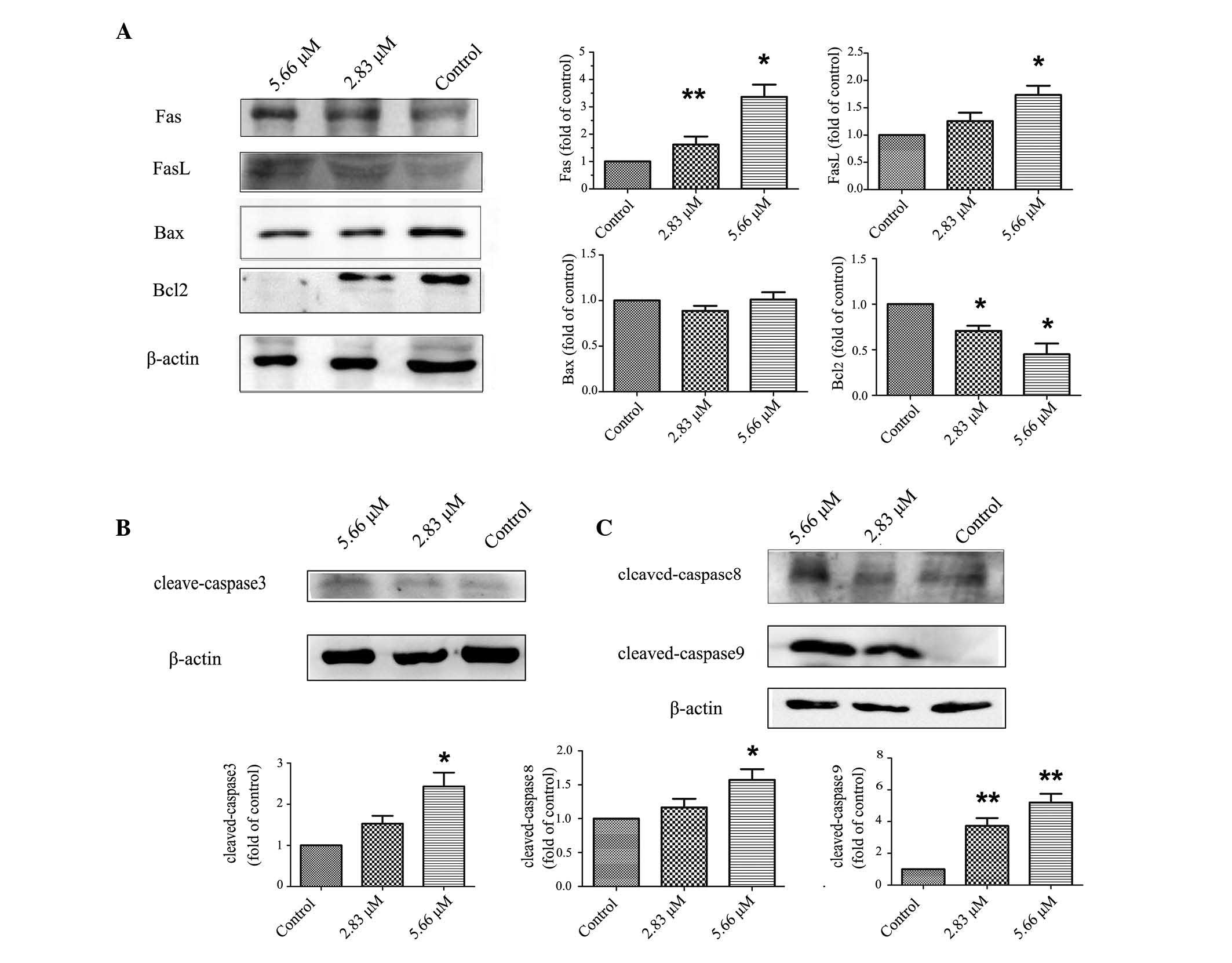|
1
|
Stupp R, Mason WP, van den Bent MJ, Weller
M, Fisher B, Taphoorn MJ, Belanger K, Brandes AA, Marosi C, Bogdahn
U, et al European Organisation for Research and Treatment of Cancer
Brain Tumor and Radiotherapy Groups; National Cancer Institute of
Canada Clinical Trials Group: Radiotherapy plus concomitant and
adjuvant temozolomide for glioblastoma. N Engl J Med. 352:987–996.
2005. View Article : Google Scholar : PubMed/NCBI
|
|
2
|
Magaña-Maldonado R, Manoutcharian K,
Hernández-Pedro NY, Rangel-López E, Pérez-De la Cruz V,
Rodríguez-Balderas C, Sotelo J and Pineda B: Concomitant treatment
with pertussis toxin plus temozolomide increases the survival of
rats bearing intracerebral RG2 glioma. J Cancer Res Clin Oncol.
140:291–301. 2014. View Article : Google Scholar
|
|
3
|
Oliva CR, Nozell SE, Diers A, McClugage SG
III, Sarkaria JN, Markert JM, Darley-Usmar VM, Bailey SM, Gillespie
GY, Landar A and Griguer CE: Acquisition of temozolomide
chemo-resistance in gliomas leads to remodeling of mitochondrial
electron transport chain. J Biol Chem. 285:39759–39767. 2010.
View Article : Google Scholar : PubMed/NCBI
|
|
4
|
Azevedo H and Moreira-Filho CA:
Topological robustness analysis of protein interaction networks
reveals key targets for overcoming chemotherapy resistance in
glioma. Sci Rep. 5:168302015. View Article : Google Scholar : PubMed/NCBI
|
|
5
|
Bodell WJ, Gaikwad NW, Miller D and Berger
MS: Formation of DNA adducts and induction of lacI mutations in Big
Blue Rat-2 cells treated with temozolomide: Implications for the
treatment of low-grade adult and pediatric brain tumors. Cancer
Epidemiol Biomarkers Prev. 12:545–551. 2003.PubMed/NCBI
|
|
6
|
Johnson BE, Mazor T, Hong C, Barnes M,
Aihara K, McLean CY, Fouse SD, Yamamoto S, Ueda H, Tatsuno K, et
al: Mutational analysis reveals the origin and therapy-driven
evolution of recurrent glioma. Science. 343:189–193. 2014.
View Article : Google Scholar :
|
|
7
|
Man S, Gao W, Zhang Y, Huang L and Liu C:
Chemical study and medical application of saponins as anti-cancer
agents. Fitoterapia. 81:703–714. 2010. View Article : Google Scholar : PubMed/NCBI
|
|
8
|
Son MK, Jung KH, Hong SW, Lee HS, Zheng
HM, Choi MJ, Seo JH, Suh JK and Hong SS: SB365, Pulsatilla saponin
D suppresses the proliferation of human colon cancer cells and
induces apoptosis by modulating the AKT/mTOR signalling pathway.
Food Chem. 136:26–33. 2013. View Article : Google Scholar
|
|
9
|
Wang XY, Chen XL, Tang HF, Gao H, Tian XR
and Zhang PH: Cytotoxic triterpenoid saponins from the rhizomes of
Anemone taipaiensis. Planta Med. 77:1550–1554. 2011. View Article : Google Scholar : PubMed/NCBI
|
|
10
|
Wang Y, Tang H, Zhang Y, Li J, Li B, Gao
Z, Wang X, Cheng G and Fei Z: Saponin B, a novel cytostatic
compound purified from Anemone taipaiensis, induces apoptosis in a
human glioblastoma cell line. Int J Mol Med. 32:1077–1084.
2013.PubMed/NCBI
|
|
11
|
Li J, Tang H, Zhang Y, Tang C, Li B, Wang
Y, Gao Z, Luo P, Yin A, Wang X, et al: Saponin 1 induces apoptosis
and suppresses NF-κB-mediated survival signaling in glioblastoma
multiforme (GBM). PloS One. 8:e812582013. View Article : Google Scholar
|
|
12
|
Wang K, Hu X, Du C, Tu S, Zhang F and Xie
X: Angiotensin-(1–7) suppresses the number and function of the
circulating fibrocytes by upregulating endothelial nitric oxide
synthase expression. Mol Cell Biochem. 365:19–27. 2012. View Article : Google Scholar : PubMed/NCBI
|
|
13
|
Maekawa Y, Yagi K, Nonomura A, Kuraoku R,
Nishiura E, Uchibori E and Takeuchi K: A tetrazolium-based
colorimetric assay for metabolic activity of stored blood
platelets. Thromb Res. 109:307–314. 2003. View Article : Google Scholar : PubMed/NCBI
|
|
14
|
Osbourn A, Goss RJ and Field RA: The
saponins: Polar isoprenoids with important and diverse biological
activities. Nat Prod Rep. 28:1261–1268. 2011. View Article : Google Scholar : PubMed/NCBI
|
|
15
|
Tian X, Tang H, Lin H, Cheng G, Wang S and
Zhang X: Saponins: The potential chemotherapeutic agents in
pursuing new anti-glioblastoma drugs. Mini Rev Med Chem.
13:1709–1724. 2013. View Article : Google Scholar : PubMed/NCBI
|
|
16
|
de Costa F, Yendo AC, Fleck JD, Gosmann G
and Fett-Neto AG: Immunoadjuvant and anti-inflammatory plant
saponins: Characteristics and biotechnological approaches towards
sustainable production. Mini Rev Med Chem. 11:857–880. 2011.
View Article : Google Scholar : PubMed/NCBI
|
|
17
|
Uzayisenga R, Ayeka PA and Wang Y:
Anti-diabetic potential of Panax notoginseng saponins (PNS): A
review. Phytother Res. 28:510–516. 2014. View Article : Google Scholar
|
|
18
|
Yang X, Xiong X, Wang H and Wang J:
Protective effects of Panax notoginseng saponins on cardiovascular
diseases: A comprehensive overview of experimental studies. Evid
Based Complement. Alternat Med. 2014:2048402014.
|
|
19
|
Wu N, Wu GC, Hu R, Li M and Feng H:
Ginsenoside Rh2 inhibits glioma cell proliferation by targeting
microRNA-128. Acta Pharmacol Sin. 32:345–353. 2011. View Article : Google Scholar : PubMed/NCBI
|
|
20
|
Zhou J, Cheng G, Cheng G, Tang HF and
Zhang X: Novaeguinoside II inhibits cell proliferation and induces
apoptosis of human brain glioblastoma U87MG cells through the
mitochondrial pathway. Brain Res. 1372:22–28. 2011. View Article : Google Scholar
|
|
21
|
Lv L, Zheng L, Dong D, Xu L, Yin L, Xu Y,
Qi Y, Han X and Peng J: Dioscin, a natural steroid saponin, induces
apoptosis and DNA damage through reactive oxygen species: A
potential new drug for treatment of glioblastoma multiforme. Food
Chem Toxicol. 59:657–669. 2013. View Article : Google Scholar : PubMed/NCBI
|
|
22
|
Wang R, Xiao X, Wang PY, Wang L, Guan Q,
Du C and Wang XJ: Stimulation of autophagic activity in human
glioma cells by anti-proliferative ardipusilloside I isolated from
Ardisia pusilla. Life Sci. 110:15–22. 2014. View Article : Google Scholar : PubMed/NCBI
|
|
23
|
Wong RS: Apoptosis in cancer: From
pathogenesis to treatment. J Exp Clin Cancer Res. 30:872011.
View Article : Google Scholar : PubMed/NCBI
|
|
24
|
Millimouno FM, Dong J, Yang L, Li J and Li
X: Targeting apoptosis pathways in cancer and perspectives with
natural compounds from mother nature. Cancer Prev Res (Phila).
7:1081–1107. 2014. View Article : Google Scholar
|
|
25
|
Thorburn A: Death receptor-induced cell
killing. Cell Signal. 16:139–144. 2004. View Article : Google Scholar
|
|
26
|
Estaquier J, Vallette F, Vayssiere JL and
Mignotte B: The mitochondrial pathways of apoptosis. Adv Exp Med
Biol. 942:157–183. 2012. View Article : Google Scholar : PubMed/NCBI
|
|
27
|
Parney IF, Hao C and Petruk KC: Glioma
immunology and immunotherapy. Neurosurgery. 46:778–791; discussion
791–792. 2000.PubMed/NCBI
|
|
28
|
Tait SW and Green DR: Mitochondria and
cell death: Outer membrane permeabilization and beyond. Nat Rev Mol
Cell Biol. 11:621–632. 2010. View
Article : Google Scholar : PubMed/NCBI
|


















